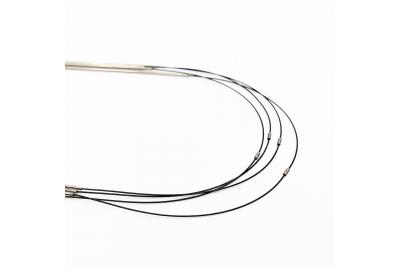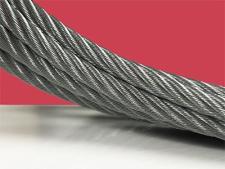The first endoscopic device, invented in 1805 by the pioneering German physician, Philipp Bozzini, didn’t use cable. This pioneering, light-projecting instrument was however the first to inspect the inside of the human body using a small, narrow device, as opposed to those requiring large, gaping incisions prevalent at the time. What Bozzini did not know was that his invention would pave the way for motion-controlled medical devices that use stainless steel cables to maneuver through the patient’s twisting and turning insides. Now, over 200 years later, endoscopic and laparoscopic devices and instruments are powered by stainless steel mechanical cables and are used as a matter of policy, as much as innovation. Thanks to Bozzini’s work, surgery today is no longer the crippling, invasive undertaking it once was.
Since the first modern endoscopic device’s motion controls were powered by wire rope, stainless steel mechanical cable has been there. Truth is, stainless steel cable has powered the motion actuators of precision surgical equipment since this revolution in modern medicine was first attempted by urologists in the 1960’s. Ever since, manufacturers have used stainless steel cable when assembling today’s surgical instruments and devices.
Today, endoscopic surgeries, powered by stainless steel cable devices, are being supplanted by robotic surgery. Unlike endoscopic devices, the robots powering these fascinating new surgical procedures use tungsten cables, not stainless steel.
Remember when a surgeon used her own fingers, hands, wrists, arms, elbow and shoulders to perform surgery? Today, sophisticated surgical robots are controlled through a series of joystick-like controllers that the surgeon uses to manipulate octopus-like limbs, joints and finger actuators.
While stainless steel cable continues to be found in a wide variety of relevant and critical surgical instruments, tungsten has become the preferred mechanical cable material for the next generation of minimally invasive surgical devices, largely because of its superior flexibility, strength and heat and abrasion resistance.
Manufacturing Tungsten for Surgical Equipment
The benefits of tungsten wire rope truly shine in surgical robots. Tungsten wire rope is found throughout the actuators and bending limbs of these elegant devices. These types of actuators are responsible for opening and closing a grip-like mechanism designed to mimic the motion of a human hand, as well as opposable digits comprising the fingers of a surgeon’s hands. Surgical robots mimic the surgeon’s movements, only without the threat of fatigue during protracted medical procedures. These complex, muskuloskeletal mechanisms are designed to grip soft tissue, bone, other instruments, along with incisions, suture wounds and repair organs.
Some especially complicated surgeries can take hours. When this is the case, it is not only ideal but today even necessary to have surgical devices that are impervious to the taxing demands otherwise imposed upon the surgeon’s limbs, joints and muscles. Surgical robots, powered by tungsten mechanical cables - the strongest metal on earth - allows the surgeon truly superhuman abilities. Due to tungsten’s high tensile strength, which is far greater than stainless steel, its impressive flexibility-to-strength characteristics and its resistance to abrasion, tungsten is clearly the ideal cable material when building these marvels of modern surgery.
The Properties of Tungsten
One of Tungsten's primary benefits is its heat resistance. Tungsten, which is manufactured from tungsten oxide, has the highest melting point of any known metal. It can withstand temperatures in excess of 6000 degrees. While surgical robots are not directly exposed to excessive heat, tungsten’s tolerance of such hostile conditions makes the material ideal for a surgical robot that cannot afford to fail. So, no matter the presence of persistent points of friction, such as bending around pulley systems, tungsten remains resistant, where stainless steel might begin to compromise over thousands or perhaps even millions of cycles.
Tungsten is also used by cable assembly manufacturers in making surgical robots due to its flexibility. Despite its toughness and heat resistance, tungsten wire rope is extremely flexible and can bend and stretch repeatedly without losing its original shape. It’s flexibility around pulleys and other bending radii make it well suited to actuate motion in surgical robots, where the movement of human limbs is being simulated.
Finally, tungsten is extremely abrasion-resistant as well, which is an obvious benefit to makers of surgical robots, who need these expensive machines to function over millions of cycles. A reliable tungsten cable assembly may have to perform as many as millions of cycles over pulley assemblies, which means thousands of points of contact and thousands of opportunities to fray, bend or warp the cable. Tungsten wire rope is naturally resistant to such friction- and abrasion-rich environments.
Key Takeaways
-
Demand for tungsten wire rope has not been affected by the current market stressors.
-
Cable assemblies made with tungsten alloys last longer than stainless steel.
-
Many surgical robots use tungsten wire rope in their precision actuators.
-
Tungsten is lightweight, flexible, heat- and abrasion-resistant.
Sava can work with you to design a tungsten wire rope assembly to fit whatever application you need. Please contact us today to get started designing your cable.






